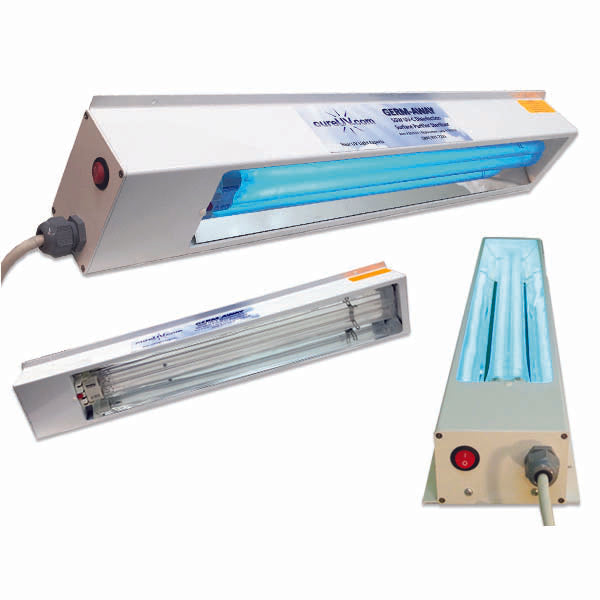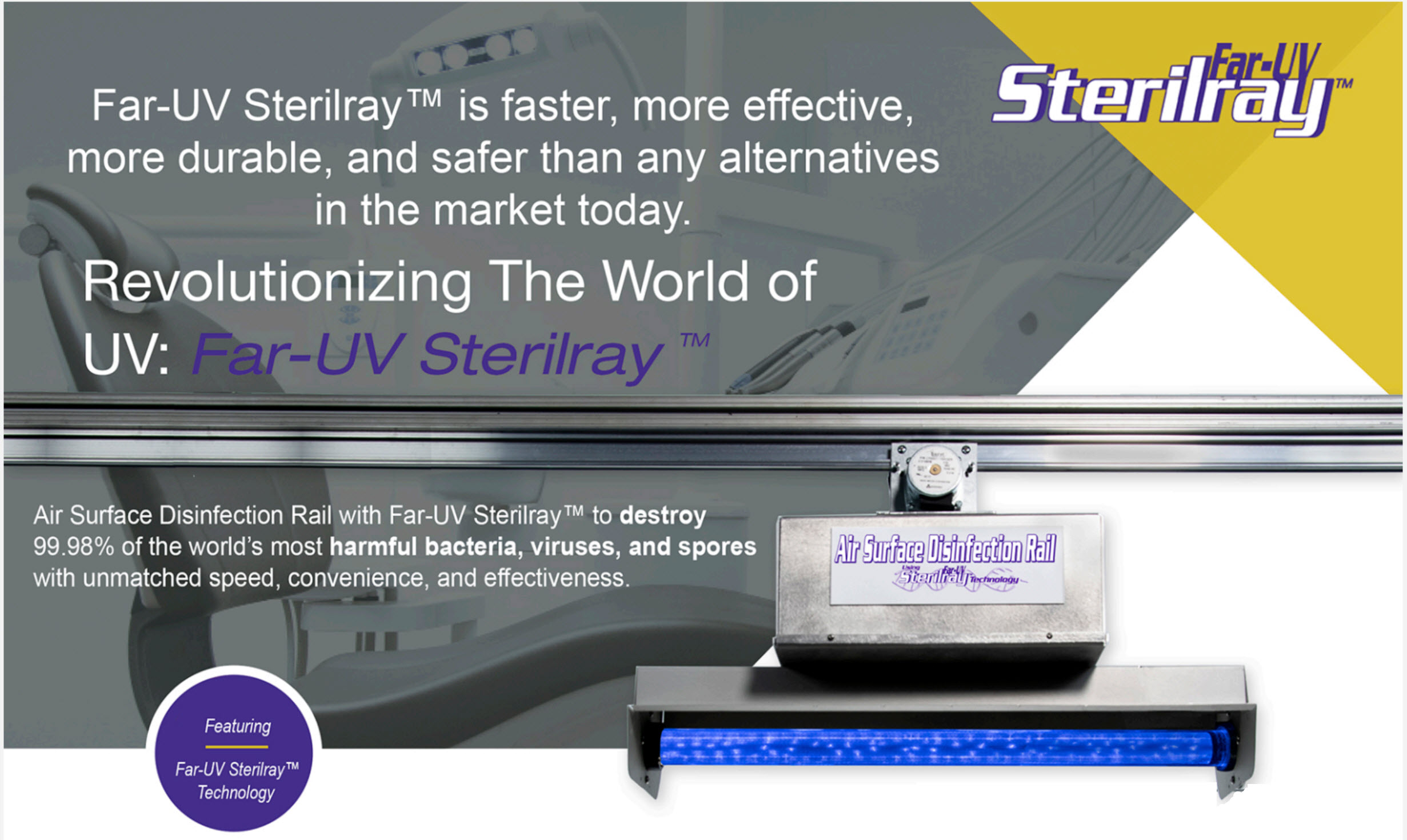UV Surface Disinfection Demystified: Understanding the Science Behind the Remedy
UV Surface Disinfection Demystified: Understanding the Science Behind the Remedy
Blog Article
Discovering UV Disinfection: An Important Tool in the Battle Versus Harmful Microorganisms
As the globe deals with an ever-increasing hazard from dangerous microorganisms, the search for reliable approaches of disinfection has become an immediate priority. One such approach that has actually gathered considerable focus is UV disinfection. In this discussion, we will certainly dive into the globe of UV disinfection, revealing its possible as a necessary device in the battle versus unsafe pathogens.
Just How Does UV Disinfection Work?
UV disinfection functions by making use of ultraviolet (UV) light to eliminate unsafe pathogens and prevent their spread. This extremely efficient technique involves making use of UV radiation to interrupt the DNA and RNA of microbes, rendering them unable to reproduce and triggering their ultimate damage.
When UV light is made use of for disinfection, it is usually produced from a light or light bulb that creates a certain wavelength of UV-C light. uv surface disinfection. This wavelength, varying from 200 to 280 nanometers, is specifically efficient at permeating the outer cell wall surface of bacteria, infections, and various other bacteria. When inside the cell, the UV radiation targets and harms the genetic material, avoiding the bacterium from reproducing and causing infection
UV sanitation systems are created to discharge the ideal intensity and period of UV light to ensure reliable microorganism removal. The dose of UV light needed for sanitation depends upon elements such as the sort of microbe, its resistance to UV radiation, and the specific application. In addition, the system should be meticulously crafted to ensure correct exposure of the target pathogens and to avoid any type of potential injury to human beings or the environment.
The Advantages of UV Sanitation
UV disinfection offers a multitude of advantages in successfully removing damaging microorganisms and decreasing the threat of infection. Unlike conventional sanitation techniques that depend on chemicals, UV sanitation makes use of ultraviolet light to ruin the DNA and RNA of bacteria, providing them not able to reproduce and trigger infections.
An additional significant benefit of UV sanitation is its effectiveness in eliminating a large range of microorganisms. UV light has actually been confirmed to efficiently remove germs, viruses, fungis, and protozoa, including those that are resistant to typical anti-bacterials. This broad-spectrum efficiency makes UV disinfection a versatile device in different settings, such as medical care centers, water treatment plants, and food handling sectors.
In enhancement to its efficiency, UV disinfection also offers rapid sanitation cycles. Unlike various other techniques that call for extended call times or repeated applications, UV disinfection can achieve considerable pathogen decrease immediately. This efficient and quick procedure permits enhanced productivity, decreased downtime, and boosted total functional performance.
Moreover, UV disinfection is a non-contact method, which means that it does not call for direct physical call with the things or surfaces being decontaminated. This function makes it suitable for usage on delicate equipment and delicate products that might be harmed or affected by other sanitation methods.
Applications of UV Disinfection in Medical Care

UV sanitation is additionally made use of in the sanitation of medical devices and tools (uv surface disinfection). The high intensity of UV light can efficiently kill microorganisms, viruses, and other microorganisms, ensuring that medical tools are free and risk-free from contaminants. Additionally, UV disinfection is utilized in water treatment systems within healthcare facilities. UV light can inactivating harmful bacteria, infections, and bloodsuckers, making the water safe for intake and reducing the threat of waterborne infections.
Furthermore, UV disinfection innovation is employed in the sanitation of healthcare uniforms and individual safety tools (PPE) By utilizing UV light, health care experts can make certain that their uniforms and PPE are cost-free from pathogens, preventing the transmission of infections in between clients and healthcare employees.
UV Disinfection in Public Spaces
Public areas are increasingly applying UV disinfection modern technology as a critical procedure to fight the spread of hazardous microorganisms. With the ongoing worldwide pandemic and the constant threat of contagious diseases, the demand for reliable disinfection methods in public areas has actually come to be paramount. UV disinfection provides a efficient and reliable service hereof.

UV sanitation systems make use of ultraviolet light to shut down the DNA and RNA of microorganisms, infections, and various other virus. This procedure disrupts their capability to reproduce and render them safe. These systems can be set up in various public spaces, consisting of cooling and heating systems, escalators, lifts, and surface sanitation robotics. Using UV sanitation technology in public areas not only aids in reducing the risk of infection yet also imparts confidence helpful resources amongst the public regarding their security.
As public rooms proceed to adjust to the obstacles positioned by infectious illness, UV sanitation technology plays a crucial role in making certain a safe and clean setting. By carrying out such steps, public rooms can successfully mitigate the spread of dangerous virus and add to the general health of the area.
The Future of UV Disinfection Technology
As the need for boosted sanitation approaches proceeds to grow in feedback to the continuous global pandemic and the constant threat of infectious diseases, the future of UV disinfection technology holds promising developments in guaranteeing a lot more reliable and reliable pathogen eradication in numerous settings.

One location of improvement is the growth of more compact and portable UV sanitation tools. These gadgets would certainly enable simpler and more flexible implementation in a selection of setups, such as offices, colleges, and transportation systems. Furthermore, improvements click to read more in automation and robotics are being discovered to improve the efficiency and performance of UV disinfection procedures. This includes making use of independent robotics outfitted with UV-C lights to navigate and sanitize large locations swiftly and accurately.
Another area of exploration is making use of UV disinfection in air purification systems. By integrating UV-C lights into heating and cooling systems, air-borne pathogens can be successfully counteracted, reducing the risk of transmission in interior environments.
Additionally, scientists are investigating using UV sanitation in food handling facilities to ensure the safety and security and quality of food. UV-C light has actually been found to be effective in eliminating foodborne virus, using a chemical-free choice to standard sanitation methods.
Final Thought
In verdict, UV disinfection is a crucial device in the fight versus hazardous virus. With its ability to supply a chemical-free and ecologically pleasant approach of sanitation, UV innovation holds terrific possible for the future.
UV disinfection systems are developed to produce the proper intensity and period of UV light to guarantee efficient virus elimination. The dosage of UV light required for sanitation depends on aspects such as the type of microorganism, its resistance to UV radiation, and the certain application. Unlike conventional sanitation methods that count on chemicals, UV sanitation makes use of ultraviolet light to damage the DNA and RNA of bacteria, rendering them not able to reproduce and cause infections.In addition to its effectiveness, UV disinfection likewise uses rapid sanitation cycles. One of the primary applications of UV sanitation in medical care is in the sanitation of patient spaces and operating movie theaters.
Report this page